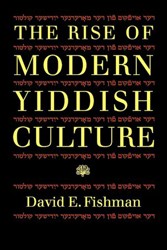David Fishman’s beautifully written book tells the story of the brave men and women in the Vilna ghetto who, while working under Nazi surveillance, risked their lives to smuggle and hide rare books, manuscripts, paintings, Torah scrolls, and other Jewish treasures that the Nazis were intent on stealing or destroying.
It was an important form of Jewish resistance during the Holocaust — the struggle to prevent the destruction and obliteration of Jewish culture. No one is more qualified to tell this story than Professor David Fishman, who spent twenty-five years conducting archival research and interviewing survivors in several countries and languages.
The story of the Nazis’ intentional destruction of Jewish culture and the simple heroism of the book smugglers is at once horrifying, depressing, amazing, and inspiring. Fishman captures this complex tapestry with great clarity, in spare and vivid prose.
It is not surprising that Vilna (Vilnius), the “Jerusalem of Lithuania,” was a prime target for the Germans. In 1942 the Nazis ordered Herman Kruk, head of the Vilna ghetto library, and Zelig Kalmanovich, a director of prewar YIVO, to collect the very best “Jewish books, artwork, and museum valuables” for shipment to Germany (where they were to be displayed after the Jews of Europe were murdered). Kruk recruited Jewish poets, writers, and scholars to join his staff of forty men and women.
They were ordered to select a third of the books for the Germans; the rest were to be destroyed. As Rachel Krinsky, one of Kruk’s team, recalled, “the books were, like us, in mortal danger.” When the Nazis carried out “selection” they threw “70% of the books from the YIVO treasures into the trash as scrap paper.” Kruk wrote that his staff was “literally weeping…Your heart can break as you watch.”
In an effort to save some of the Jewish treasures, members of Kruk’s staff (who became The Book Smugglers) wrapped rare manuscripts around their bodies and hid cherished books and artifacts in their clothing and shoes. They risked being shot if they were caught by the Germans, but Jewish policemen might let them pass into the ghetto because they were “only carrying papers.” (Thus the police dubbed them the “paper brigade.”)
The leaders of the paper brigade, the Yiddish poets Avrom Sutzkever and Shmerke Kaczerginski, emerge as larger than life in Fishman’s portraits. We follow their audacious, risky, and ingenious schemes — Sutzkever, for instance, used a permit allowing him to burn waste paper in his oven in order to rescue manuscripts by Maxim Gorky, Sholem Aleichem, Hayim Nachman Bialik, and Theodore Herzl; drawings by Marc Chagall; and a rare manuscript by the Vilna Gaon.
Between March 1942 and September 1943, the “paper brigade” rescued thousands of books and tens of thousands of documents from Nazi hands. Most of their treasure was hidden in a concealed basement in the ghetto library and in underground bunkers spread throughout the ghetto. For example, in October 1942 Herman Kruk recorded 200 Torah scrolls in bunker #3.
While I found the chapters on the ghetto smugglers the most compelling in the book, Fishman also follows the rescued treasure over the next eighty years — from immediate postwar period, when the surviving members of the paper brigade discovered that the Soviets were as hostile to Jewish culture as the Nazis, and then faced the monumental task of smuggling everything they had saved out of the USSR — through the (continuing) post – Cold War international negotiations about competing claims to the rightful ownership of the books.
All of this is told in Fishman’s masterful prose. What a pleasure it is to have a good read, a first-rate history, and a new perspective on Jewish cultural resistance all wrapped up in one fascinating book.



